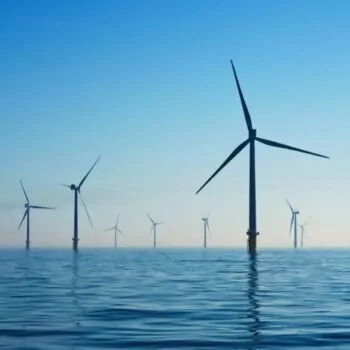This week the European Commission released its new EU budget proposals for 2021-2027. This matters for Europe’s response to climate change: the EU budget is an important source of funds for areas from low carbon innovation to clean infrastructure and sustainable regional development. When it works well, EU climate spending should be able to lever in even larger amounts of private investment.
The biggest headline announcement is an increase in the proportion of climate-related spending in the EU budget from 20% to 25%. The significance of this proposal should not be underestimated. At a time of extraordinary pressure on the EU budget, spending on climate will rise by €16 billion per year. In the absence of the UK (a major recipient of EU climate funds) the impact felt by the remaining member states will be even higher. And with much of the increase in the overall EU budget taken up by areas such as security and defence – which will struggle to be classified as climate spending – the increase in climate spending in areas such as research and innovation, economic development and agriculture will be even more pronounced.
Nevertheless, the increase accounts for only a small proportion of the €170 billion per year gap needed to meet the EU’s climate and energy targets. While few actors have argued for lower climate spending, a number of stakeholders are pushing for considerably more than the 25% percent on the table. The European Parliament wants climate spending increased to 30%; Macron wants spending on ecological transition of 40%; and Greens want 50% devoted to climate. Expect upwards pressure on the climate earmark as negotiations progress, rather than a gradual chipping away.
It’s also important to remember that a bigger headline number doesn’t necessarily mean better climate spending. The European Court of Auditors has criticised the current approach to climate earmarking as insufficiently targeted, and the EU is not on track to meet its current climate spending goal of 20% of the 2014-2020 budget. Better tracking methodologies are needed but so too are a clear set of climate ‘missions’ for each spending area to give a better sense of what needs to be achieved.
Beyond the headline numbers, there are five areas of the EU budget announcement that struck us as particularly notable and will be important to watch as the more detailed EU budget instruments are rolled out over the next 6 weeks.
Retooling investment funds
First, the proposals contain a new instrument for investment, labelled ‘InvestEU’. This replaces the European Fund for Strategic Investments (EFSI). This has been seen as successful at mobilising capital for investment in Europe, and there has been a positive effort to deploy sustainable infrastructure (albeit with a few questionable fossil investments thrown in too). The new InvestEU fund will continue in the same fashion with “sustainable infrastructure” as one of the four priority windows. More details will follow on what the InvestEU fund looks like, announcements are scheduled for 6 June, however investments which deliver high economic value and security for all EU citizens and businesses should be the sole focus. This means dropping investment in projects that run counter to EU climate goals.
The InvestEU fund must also go further to address key bottlenecks constraining investment to high-quality sustainable projects. There is considerable implicit demand in Europe for finance for energy efficiency investments and other sustainable infrastructure measures, but these do not always match up in size or scope to public finance instruments and aggregation is never easy. The continuation of the European Investment Advisory Hub (as InvestEU Assistance) is welcomed in this regard, as this should help to develop stronger project pipelines for low carbon infrastructure projects. This should include a larger project development assistance component and a focus on energy efficiency projects, which have the largest investment needs to meet our 2030 climate and energy targets.
Reorienting infrastructure spending
The EU budget proposals notably include a doubling of EU energy infrastructure spending through ‘the Connecting Europe Facility’. To be successful, EU energy infrastructure needs not only more money but also better spending.
Europe’s energy system is entering a decade of deepened decarbonisation, digitisation and decentralisation. This will transform the definition and needs for infrastructure investments. The current European budget spends ca. €4bn per annum on centralised, high-carbon infrastructure, largely gas. This week’s proposal indicates that the EU recognises the need to change, but only goes half way in getting the European infrastructure ready.
On the one hand, it makes much needed funding for smart grids a priority under the reformed Connecting Europe Facility and seeks to require sustainability proofing under the newly created InvestEU. On the other hand, it fails to clearly exclude fossil fuel investments. The workaround, a requirement for “sustainability proofing” (InvestEU) or alignment with “sustainable development” (Cohesion Funds) remains undefined. Only a clear definition of the sustainability requirement – including ending spending on unabated fossil fuel infrastructure – will ensure alignment with the EU’s long-term decarbonisation goals. Accordance with the EU’s long-term goals and Member States’ National Energy and Climate Plans to 2030 could be a first step.
Refocusing Cohesion Policy
EU ‘Cohesion Policy’ provides economic development funds to Europe’s less wealthy regions. In the current proposal, Cohesion Policy funding suffers a cut of 7% compared to the current period. Nevertheless, its main objective did not change: “to help Member States and regions lagging economically or structurally behind to catch up with the rest of the EU”. The majority of Cohesion Policy funding will continue to be allocated on the basis of relative GDP per capita. However, in the new proposals climate change is a further factor to be taken into account, alongside youth unemployment and integration of migrants.
This opens interesting opportunities to link Cohesion Policy funding to the National Energy and Climate Plans currently under development by member states. Put simply, countries that are willing to go further on climate, efficiency renewables must be confident that they will be supported to do so.
The new climate factor could also mean better use of Cohesion Policy funds to support regions most vulnerable to climate risk, and to assist communities dependent on high-carbon industries to develop new economic strategies. Robust guidelines to ensure the funds benefit workers, not only companies are now in focus.
Reinventing innovation
On the surface, innovation is a big winner from the EU budget announcements. Up by 30%; commission spokespeople have been quick to spin this as a 50% rise for remaining EU countries when you factor in the departure of the UK.
However, this increase is actually at the lower bound of what was expected. The Commission’s own high-level group on innovation proposed a doubling of innovation spending, as did the European Parliament. Low carbon innovation not only reduces the cost of the climate transition but is also a key part of Europe’s competitiveness offer in a rapidly changing world. The EU has fallen behind China in research and innovation spending in recent years, and it’s not clear that the proposals will be enough to close the gap.
On the plus side, moves are underway to take a more ‘mission-oriented’ approach to EU innovation funding, through setting tightly-defined strategic but cross-sectoral goals. For example, one such mission could include helping 100 cities go zero carbon by 2027. This approach provides direction and focus on innovation and is a welcome departure from past practice. It’s clear however that for a ‘mission-oriented’ approach to succeed it will need to go well beyond innovation funding alone and become a defining feature of EU regulation and expenditure as a whole. All EU budget instruments – from infrastructure to economic development – should be designed to enable maximum pull-through of low-carbon innovation.
Resourcing the EU budget
Finally, as well as proposals on spending, this week’s announcements also put forward significant changes on the revenue side. This included a proposal for 20% of EU Emissions Trading Scheme carbon revenues to go towards the EU budget, along with a new levy based on unrecycled plastics. It makes sense to shift the burden of paying for the EU budget onto taxes on environmental externalities, rather than member state contributions alone. However, carbon revenues have the potential to be highly volatile. For the EU ETS to be a predictable source of revenue, further reforms may need to be considered (for example a price floor or further measures to boost the carbon price). It will also be important to avoid unintended consequences. 50% of current EU ETS revenue is already meant to be earmarked for climate spending, raising questions of how this spending will be replaced when EU ETS revenues are reallocated to the EU budget.


